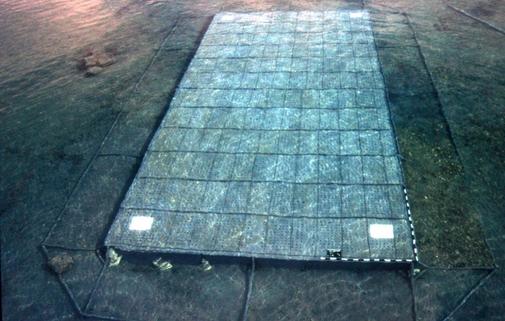At 2,600 years old it is the oldest Phoenician ship known . But it is two meters under the water of the Mediterranean Sea, in Murcia. And experts have spent 25 years discussing whether its conservation would improve by taking it out or keeping it where it rests. The Ministry of Culture, which chooses not to move it, and the Ministry of Culture of Murcia, which has pressed to extract it, agreed yesterday to conduct new studies for its protection, after the inspections started on August 19. That is, it will not move, for now.
In the inspections the experts have verified the structural cohesion of the boat, but they warn of the progressive deterioration that has suffered the box that protects the ship, installed in 1999, and warn of the risk that could suffer in the future by the action of the storms.
The entities confirmed at a press conference that a comprehensive conservation project for this Phoenician wreck will be built between 610 and 580 BC . This includes the strengthening of the structure of the vessel, which could provide valuable information on the link established by the indigenous inhabitants with the Phoenician communities.
The ship was discovered in 1994 . During an expedition on the beach of La isla in the port of Mazarrón, a group of archaeologists located 50 meters from the waterfront a complete and intact ship 8.5 meters long, 2.25 wide and 0.9 hull height. He was named Mazarrón II and is so well preserved that you can see the details of the Phoenician naval architecture, which makes it a unique case in the world.
At the time of its discovery, more than 2,000 kilos of litharge lay on the ship, a mineral from which silver could be extracted, which allowed the ownership of the ship to be attributed to merchants .
The Mazarrón II sailed in the sixth century BC. This sailboat, experts say, was used to connect different points of the coast where mining activities were taking place, and without losing sight of the coast to take refuge in case of storm. Its construction was made only with wood from the region: cypress, olive, pine and fig. To fix the boards they used a novel technique known as mortise, tongue and pin, an innovation in shipbuilding that consists of fixing the boards together, and these to the keel to give more strength to the structure of the ship.
Due to a storm, the ship was shipwrecked in the region of Murcia. The chemical composition of the seabed that surrounds the area where it rests, less than 2.5 meters deep allowed its conservation . Given the fear of the experts for the damage that the ship could suffer in a possible removal, they decided to cover it with the iron chest until they had a definitive extraction plan that, until today, has not been achieved.
Until a final decision is made, the current protection system will be consolidated and the monitoring of the deposit will be reinforced to verify that the conservation conditions are suitable at all times.
According to the criteria of The Trust Project
Know more- culture
- history
The Paper SphereAdelanto from the first chapter of Pérez-Reverte's new novel, 'Sidi'
LiteratureBerlin, 1928: casual prostitutes, beggar soldiers and orphans aimlessly
HistoryThe sinking of Essex and the cannibals of Moby Dick

